Kimono And Koedo: A Solo Day Trip From Tokyo To Kawagoe
One fine day with just me, myself and I in Saitama.
Rich in atmosphere, history and culture, Kawagoe is a wonderful destination for a day trip from Tokyo. It’s also the perfect place for a stroll in kimono!
Less than an hour by train from Tokyo, the city of Kawagoe in Saitama has plenty to offer. The historical center is lined with traditional kurazukuri buildings, clay-walled warehouses dating back to the end of the 19th century, and the area has many cultural assets and an attractive riverside. Moreover, the main attractions are all well within walking distance of each other.
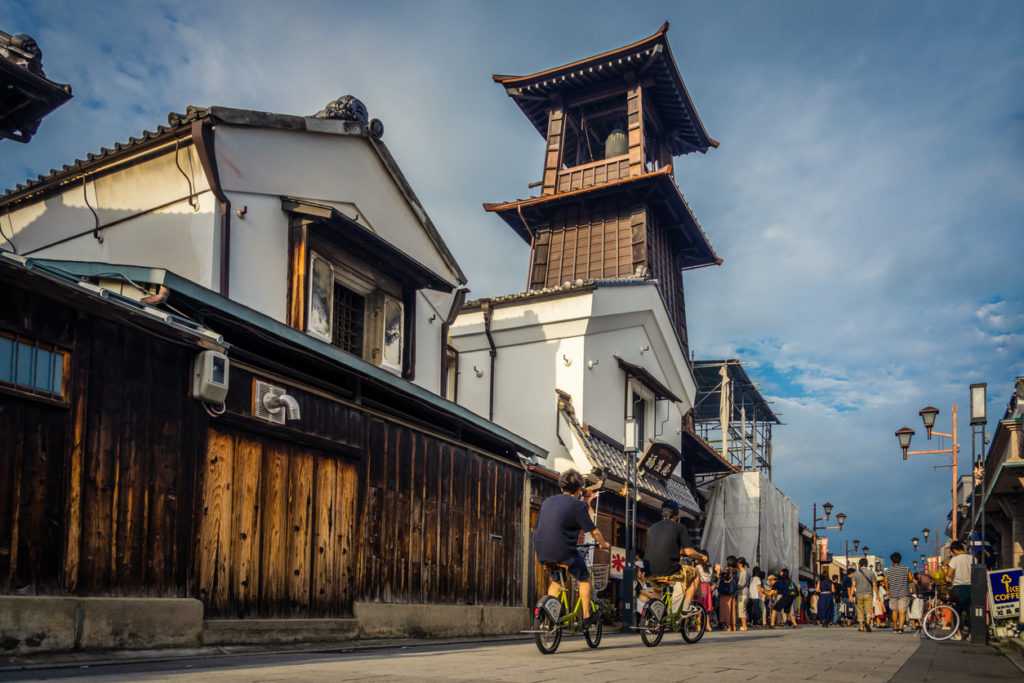
Kawagoe: Japan’s “Little Edo” town.
Kawagoe has been nicknamed Koedo (literally, “Little Edo”) due to its status as one of the major merchant towns surrounding Edo, the old name for Tokyo.
Although I don’t own a kimono, let alone know how to put one on by myself, I’ve always loved wearing them. In recent years, kimono shops offering reasonably priced rentals for visitors have been springing up in Japan’s traditional tourist areas. A few years ago I would have felt too self-conscious to rent one and walk around by myself. However, it really adds to the experience when visiting a traditional town and now I can’t wait to dress up.
I took the Seibu Red Arrow limited express train from Shinjuku and got off at Hon-Kawagoe Station, which is about a 15-minute-walk from the historic district and major tourist attractions. My first stop was Vivian, a kimono rental store tucked in a little side street off the main thoroughfare (Kurazukuri Dori). The owner, Sonoe Funabashi, is also a professional actress and nihon buyo dancer.
“When I opened the shop about 10 years ago there weren’t so many foreign tourists coming, but Kawagoe has grown very popular recently. I haven’t raised my prices in all that time because I want to provide an inexpensive kimono experience for as many people as possible,” she says.

Here I am in my rental kimono all ready for my solo day trip.
At just ¥2,160 for your choice of kimono, bag, zori slippers and hair ornaments, plus dressing and simple hairstyling, I found the price to be very reasonable. (¥3,240 for men; ¥2,160 for children.) I chose a lovely pink-purple kimono which seemed perfect for spring, and I was dressed and ready to go in less than 30 minutes. (Reservations are recommended, especially if you’re coming on a weekend or during school holiday periods.)
Just a minute’s walk from Vivian, I made a quick stop at the Toki no Kane (Bell of Time), a wooden bell tower which is one of Kawagoe’s most famous landmarks. The original tower was built over 400 years ago, but it has burned down several times since. The current tower dates back to 1893.
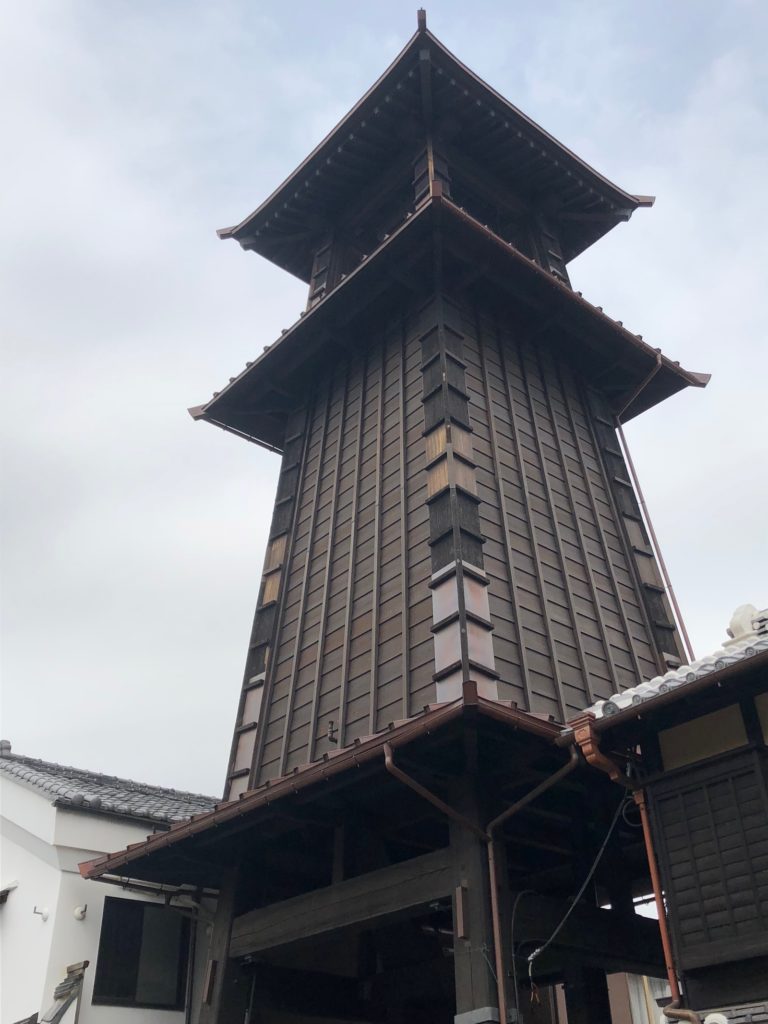
The famous Toki no Kane, a symbol of Kawagoe.
My next destination was Kawagoe Hikawa Shrine, about 15 minutes away on foot. Walking in a kimono and zori, I naturally assumed a demure gait with short steps, and was feeling quite old-school Japonesque. I held my breath when I passed a gaggle of local elementary school kids, but nobody uttered a single comment about the foreigner in a kimono. They are probably used to it.
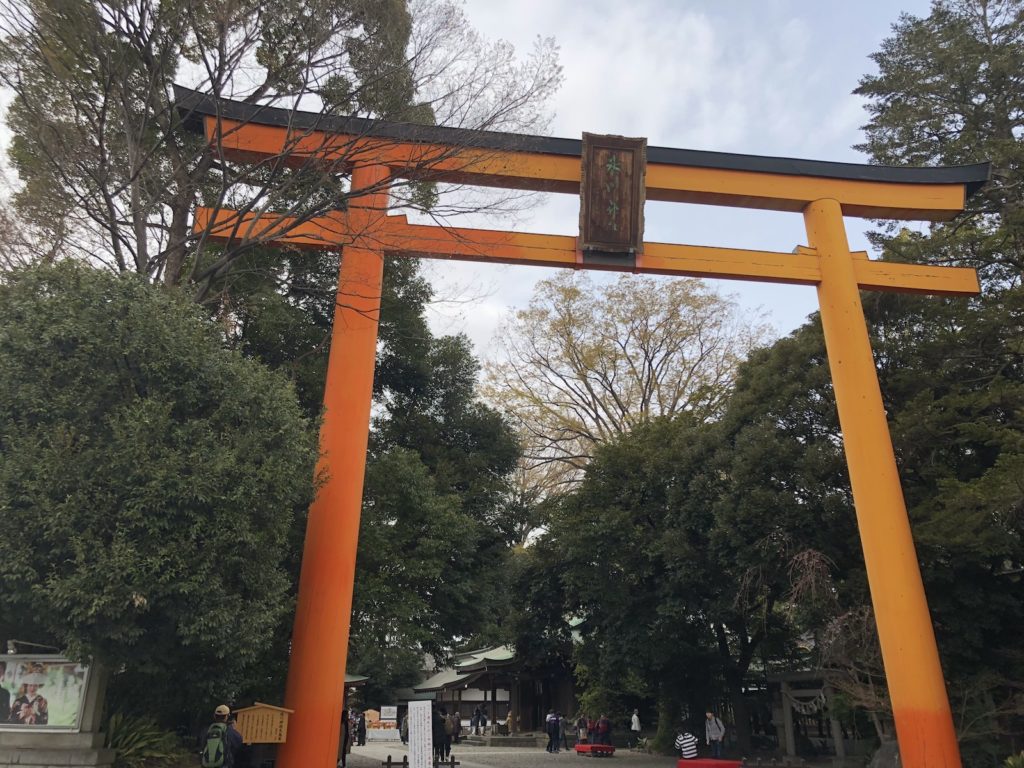
Entering Kawagoe Hikawa Shrine.
Not to be confused with a shrine of the same name in Omiya, Hikawa Shrine is around 1,500 years old. Five Shinto deities are enshrined there, included a married couple, so the shrine is said to be lucky for those wanting to find love and matrimonial happiness. It is also known for the cute little fish-shaped mamori (good luck charms), which you can “fish” out of a tub.
In line with my spring theme, I went for a sakura-colored fish. The paper fortune inside said I could expect “stability in life and love,” so I’ll take that as a win.
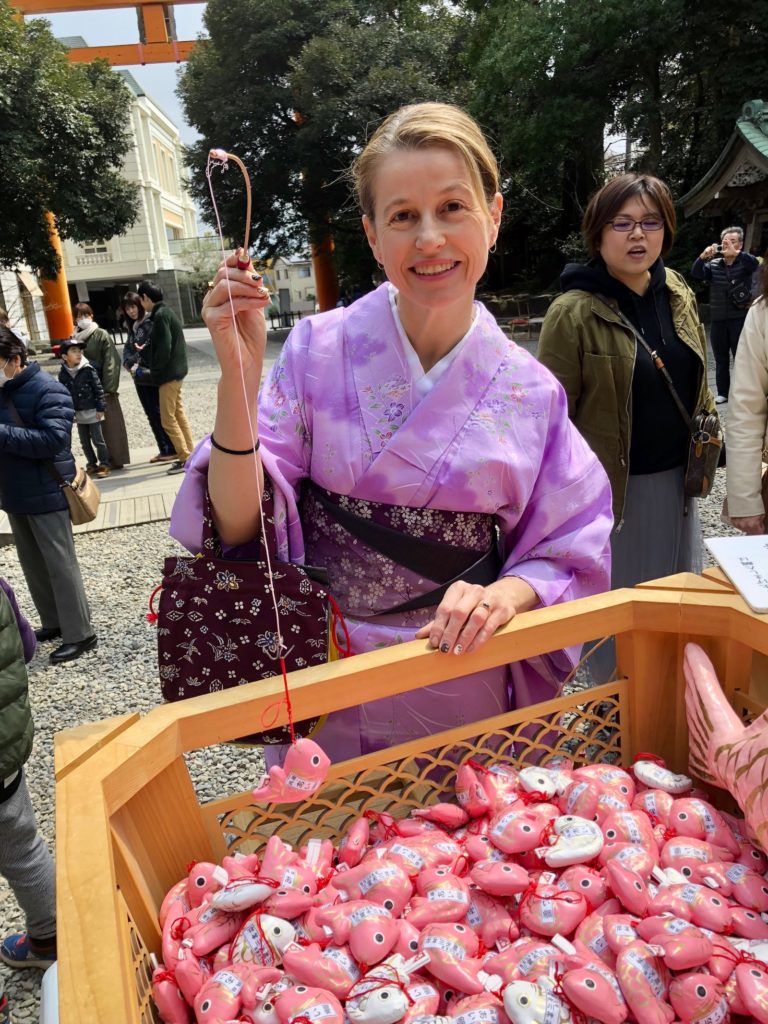
Me “fishing” for luck at Kawagoe Hikawa Shrine.
Behind the shrine is a lovely surprise—the picturesque Shingashi River (pictured above). It is especially pretty in the spring with the cherry blossoms.
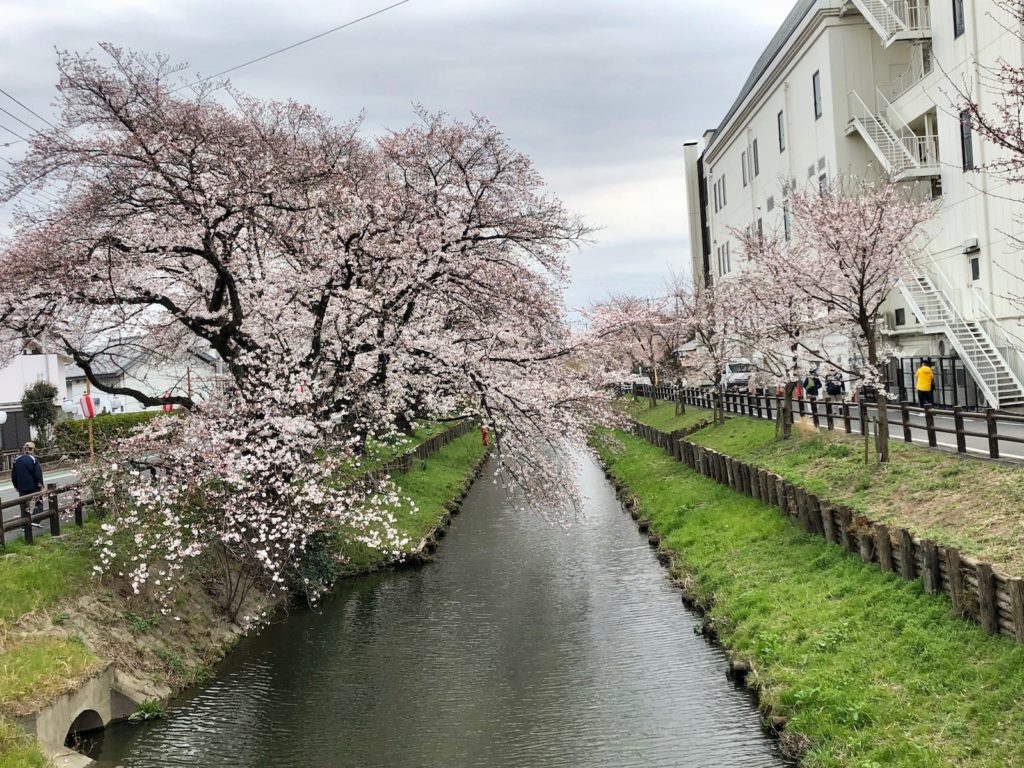
By now I was feeling hungry. Next to the shrine is an impressive-looking building called the Hikawa Kaikan, and inside you’ll find the Musubi Café. It’s a great place to stop for lunch or coffee. The Musubi (onigiri) Set was a perfect lunch for a vegetarian. (The beautiful cakes were very tempting, too.)
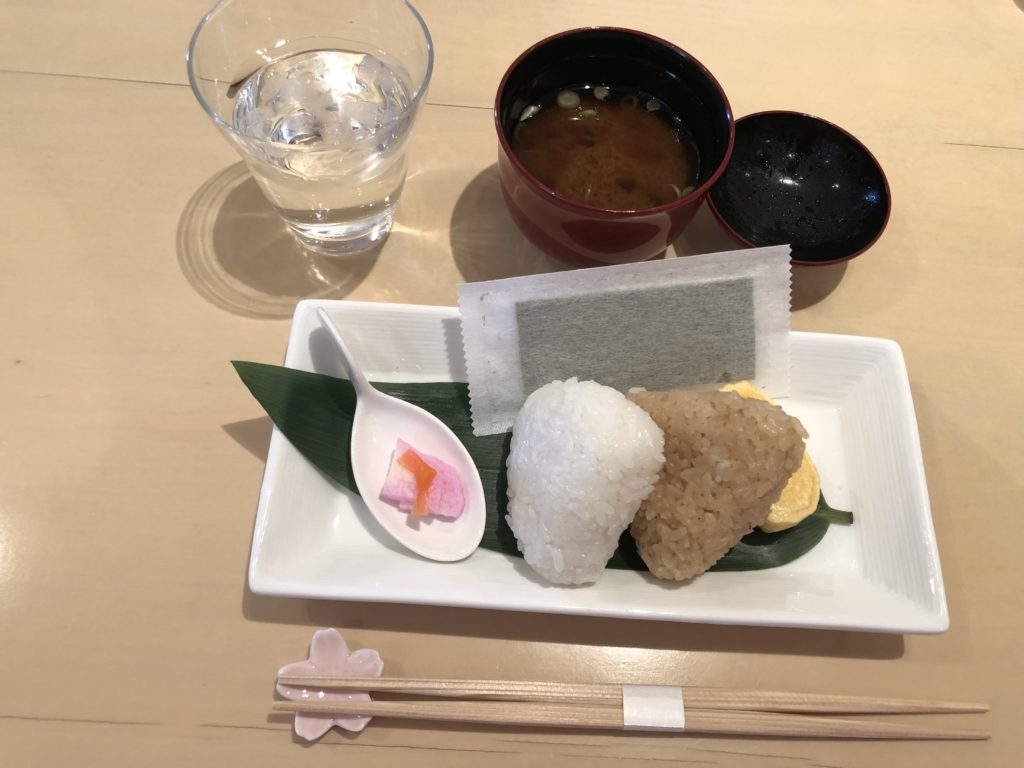
My rice ball lunch at Kawagoe’s Musubi Cafe.
After a break, it was off to another spot with great cultural significance, the Kitain Temple. I got a little bit lost en route, and I came across two friendly Japanese women who were also pouring over a map. Like me, Yoshiko and Keiko were in Kawagoe on a day trip, and after bonding over our shared bad sense of direction, we joined forces and walked to Kitain together.
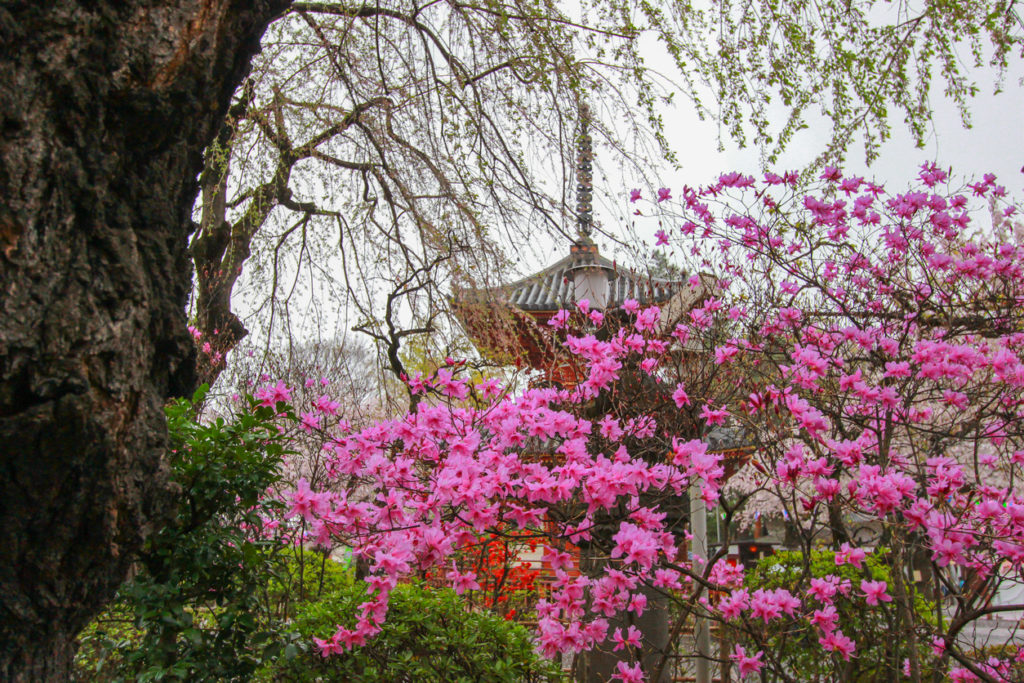
The beautiful Kitain Temple in spring.
Kitain Temple dates back to the ninth century, but in 1638 it was decimated by fire and Iemitsu Tokugawa, the third shogun in the Tokugawa dynasty, donated some buildings from Edo Castle in Tokyo (which was itself later destroyed). Much of the complex is free, but for ¥200 you can have access to the inner buildings, including the actual room where Iemitsu is said to have been born in 1604. You also have beautiful views of the Japanese garden. Despite being a busy day in Kawagoe during the Japanese spring break, there was hardly a soul in sight in this little hidden oasis.
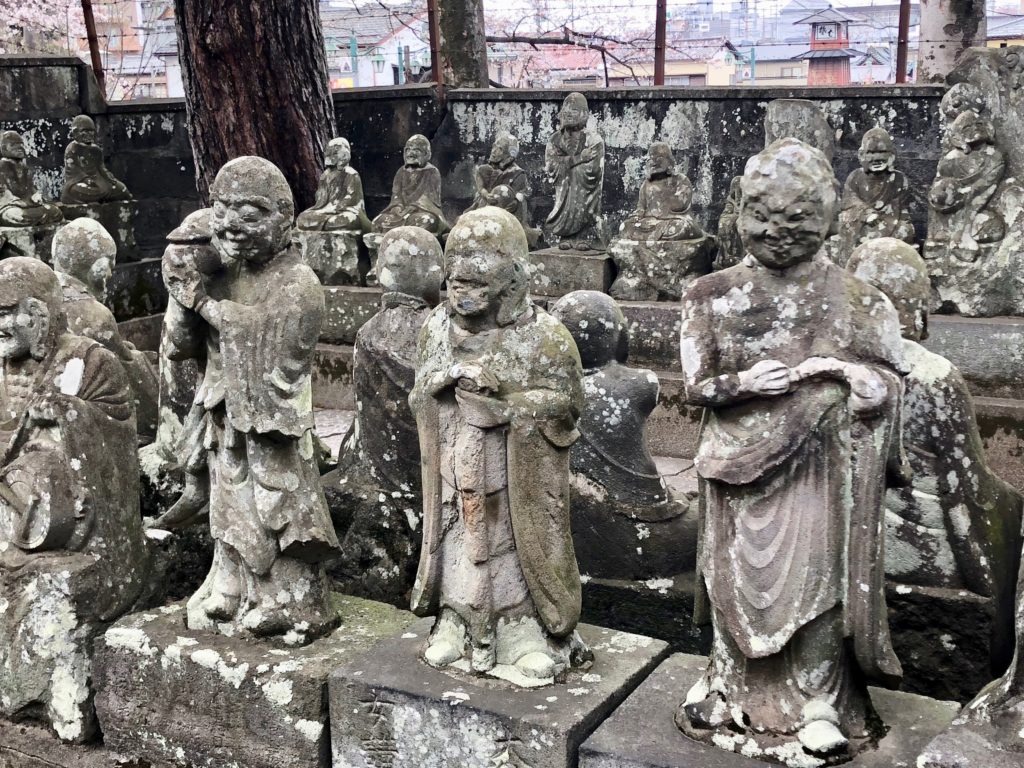
Kitain Temple’s Gohyaku Rakan stone statues of Buddhist disciples.
Also included in the ¥200 ticket is the Gohyaku Rakan—540 small stone statues of Buddhist disciples. Each one has its own unique face and they are located in a small separate courtyard on the temple grounds. A temple worker told us that the 12 animals of the Chinese Zodiac were included among the statues. Rubbing the head of the statue with your zodiac animal brings good luck—if you can find it! (Luckily for Keiko, Yoshiko and me, he kindly pointed out our animals.)
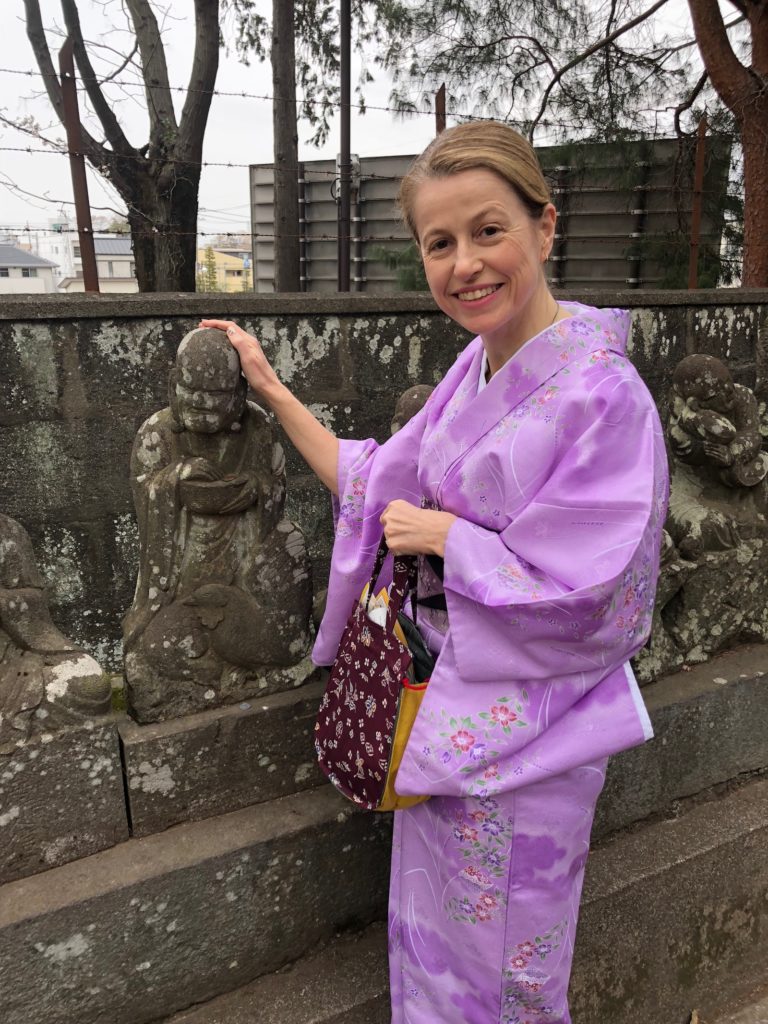
In for good luck!
Heading back to the main historic kurazukuri district, we ducked into Kashiya Yokocho (Penny Candy Lane), a little alley leading off Kurazukuri Dori. As the name suggests, a plethora of colorful cheap sweets, snacks, toys and trinkets are on offer. It has a very nostalgic feel and is definitely somewhere kids will enjoy. I said “good-bye” to my new friends at this point.
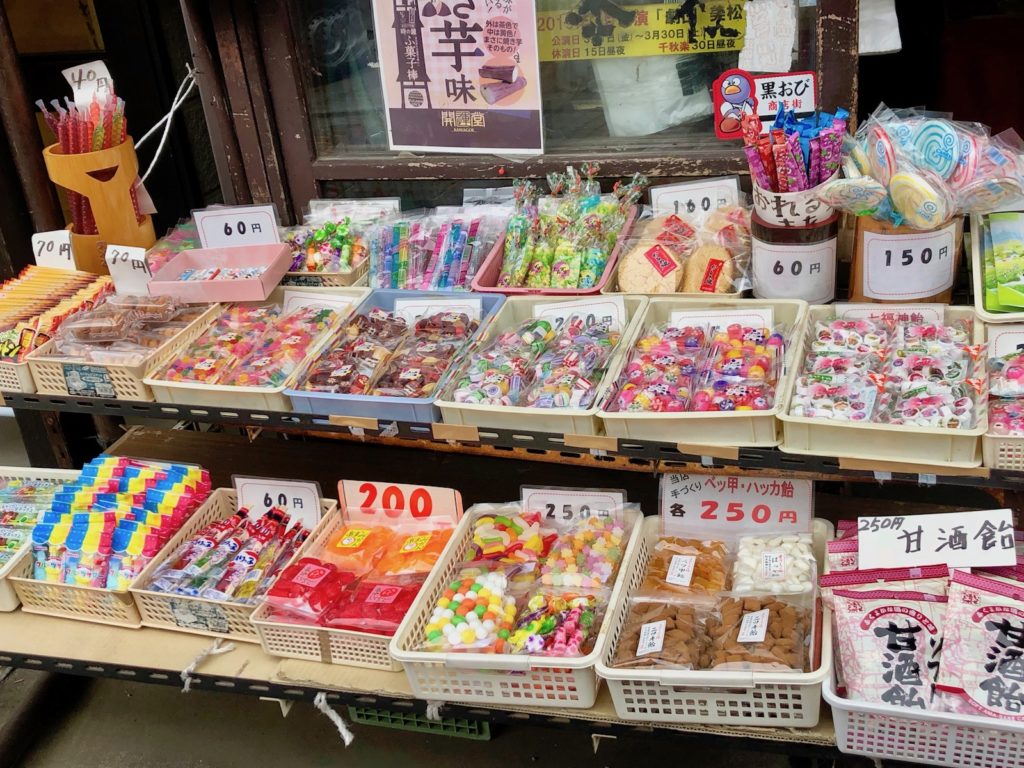
Snacks and treats along the famous Penny Candy Lane.
My final stop was in the same area: Tsubaki no Kura, a store selling a variety of Japanese gifts, souvenir items, condiments and sweets, along with a Footbath Café. Tsubaki is actually four shops in one, with three businesses and the café sharing the same two-story building. Hana Fujimoto is the manager of Kaya, a shop on the first floor selling beautiful souvenirs made from Japanese textiles.
“Since most tourists explore Kawagoe on foot, the concept of the café is to enjoy a break while soaking your tired feet,” she explains.
The popular Footbath Café only seats a few people at a time, so put your name down on the waiting list first, then check out the rest of the store while waiting for your spot. I chose an egg custard tart and locally-made cider from the menu.
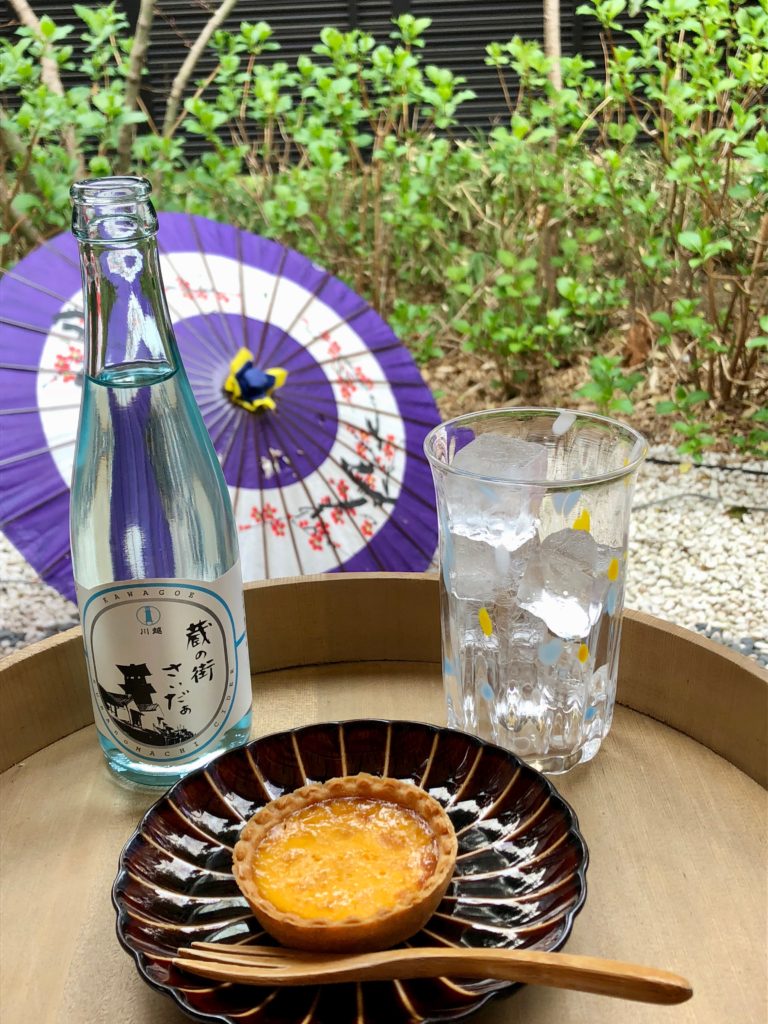
Enjoying a quick break at the Footbath Café.
It took a little bit of adjusting to get my feet into the water without getting the hem of my kimono wet, all while retaining some semblance of dignity, but somehow I managed. The warm water felt blissful, and it was a wonderful way to end my kimono in Koedo experience.
Getting there
Three major train lines connect Kawagoe with Tokyo: From Seibu Shinjuku Station, take the Seibu Line to Hon-Kawagoe Station, from Shinjuku Station, take the JR Saikyo Line to Kawagoe Station and from Ikebukuro, take the Tobu Line to Kawagoe or Kawagoe-shi Stations. From there, everything is within walking distance.
- Kimono Rental Shop Vivian: 14-5 Saiwaicho, Kawagoe-shi, Saitama
- Toki no Kane: 15-7 Saiwaicho, Kawagoe-shi, Saitama
- Kawagoe Hikawa Shrine: 2-11-3 Miyashitamachi, Kawagoe-shi, Saitama
- Musubi Café: 2-11 Miyashitamachi, Kawagoe-shi, Saitama
- Kitain Temple: 1-20-1 Kosenbamachi, Kawagoe-shi, Saitama
- Kashiya Yokocho: 2-7 Motomachi, Kawagoe-shi, Saitama
- Tsubaki no Kura: 3-2 Saiwaicho, Kawagoe-shi, Saitama












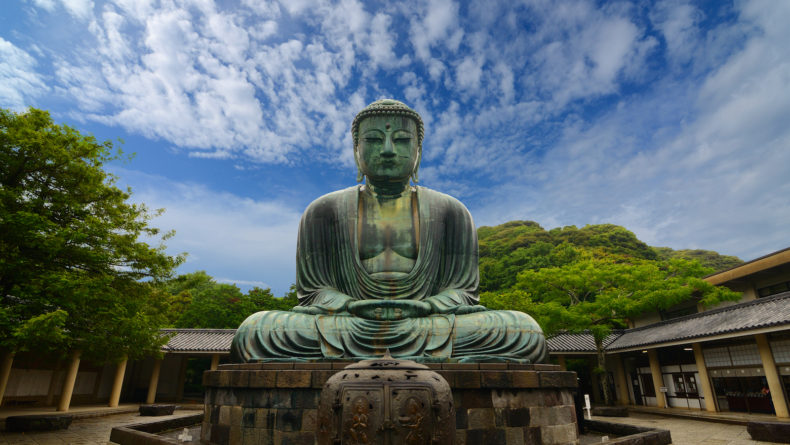
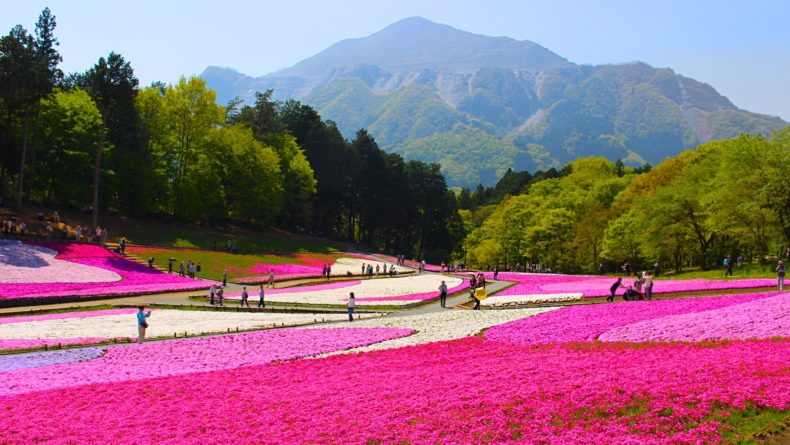
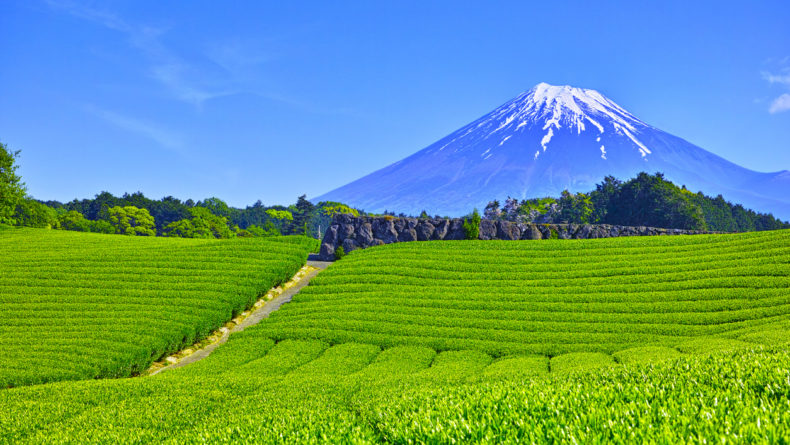
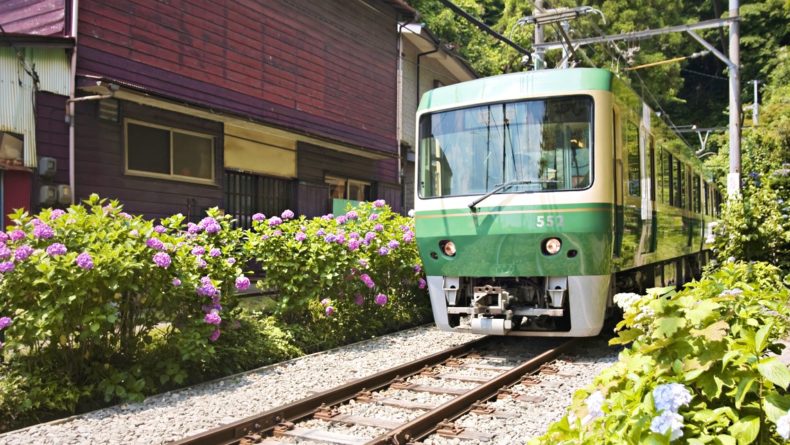
Leave a Reply